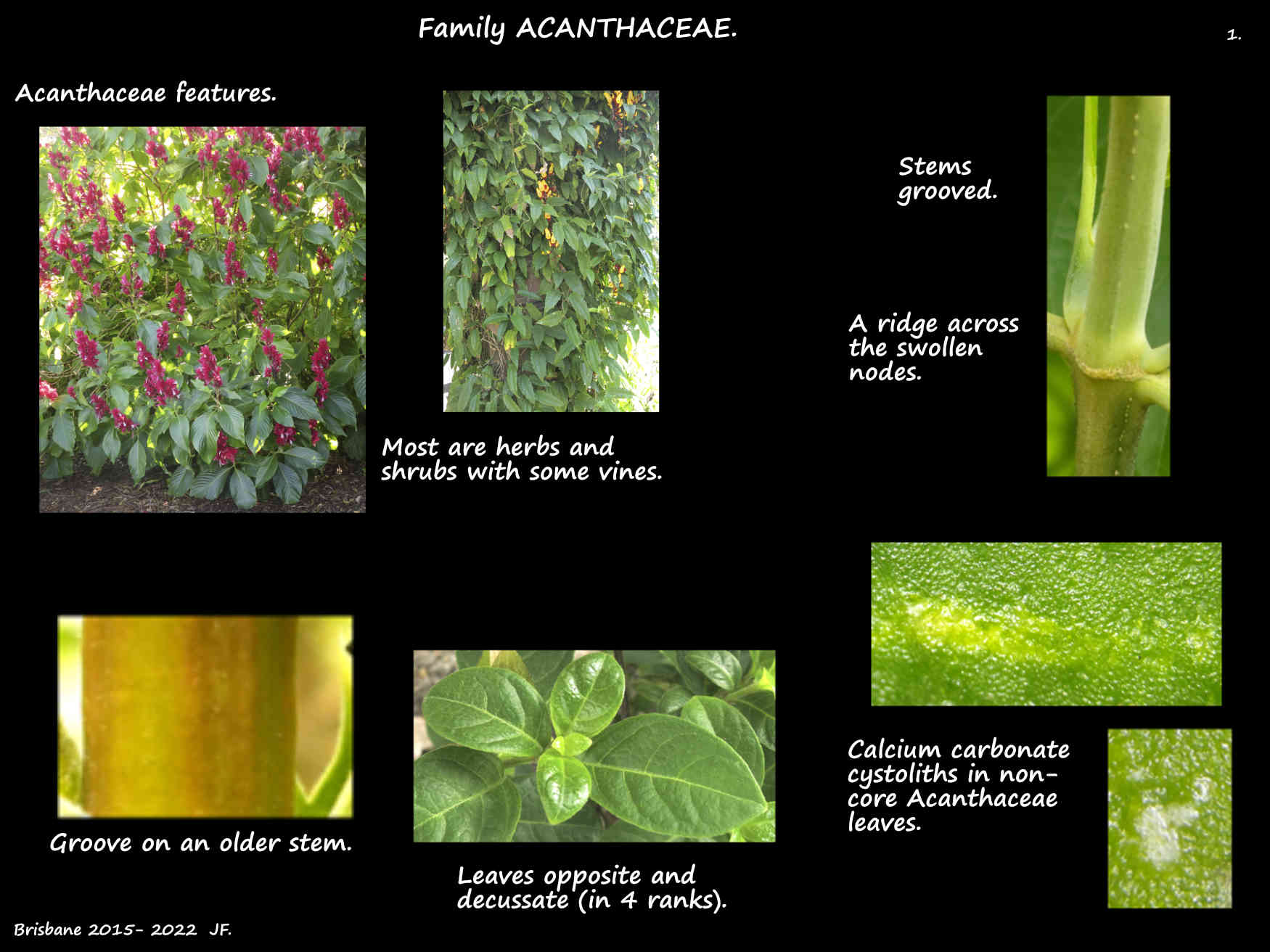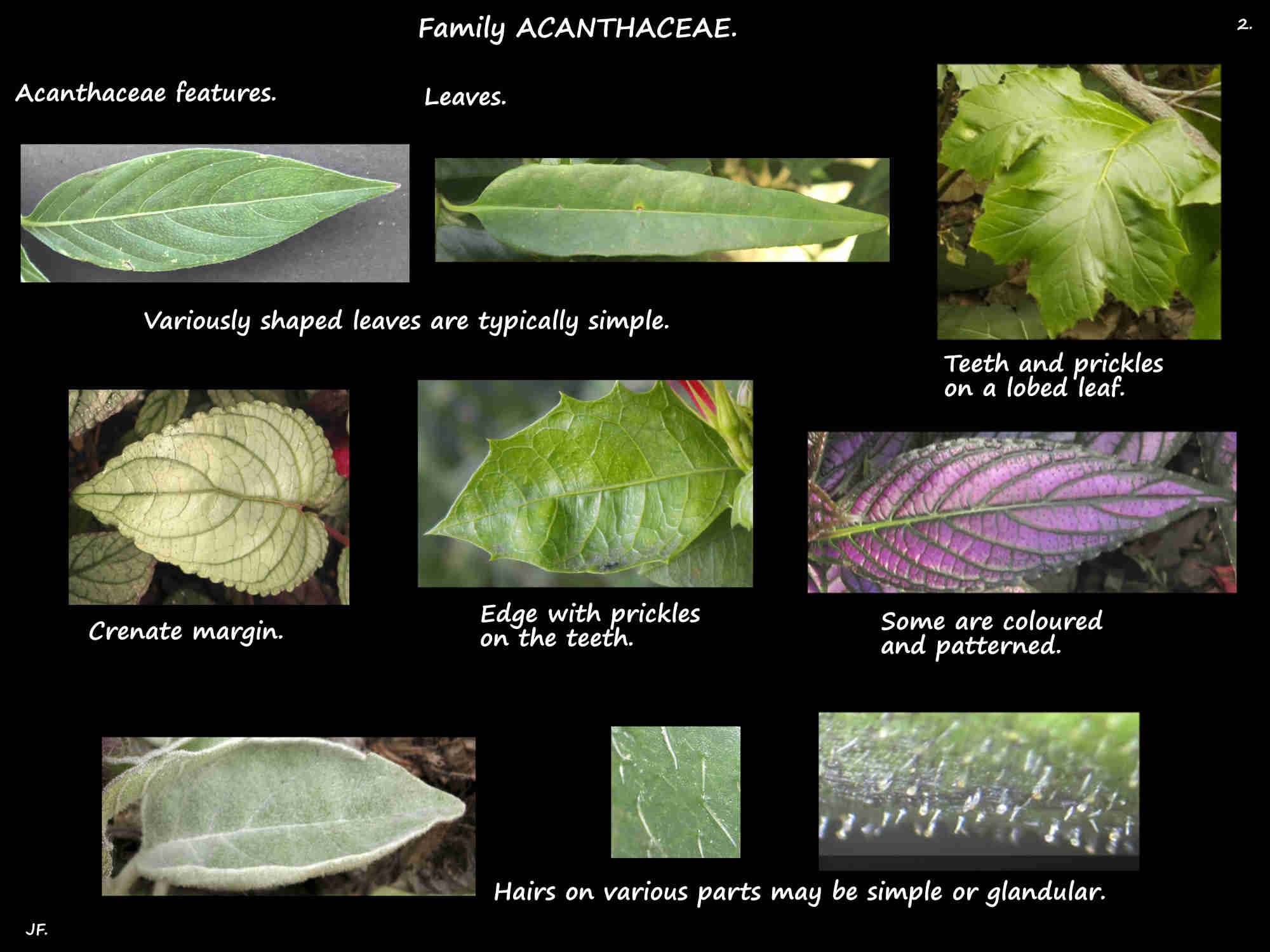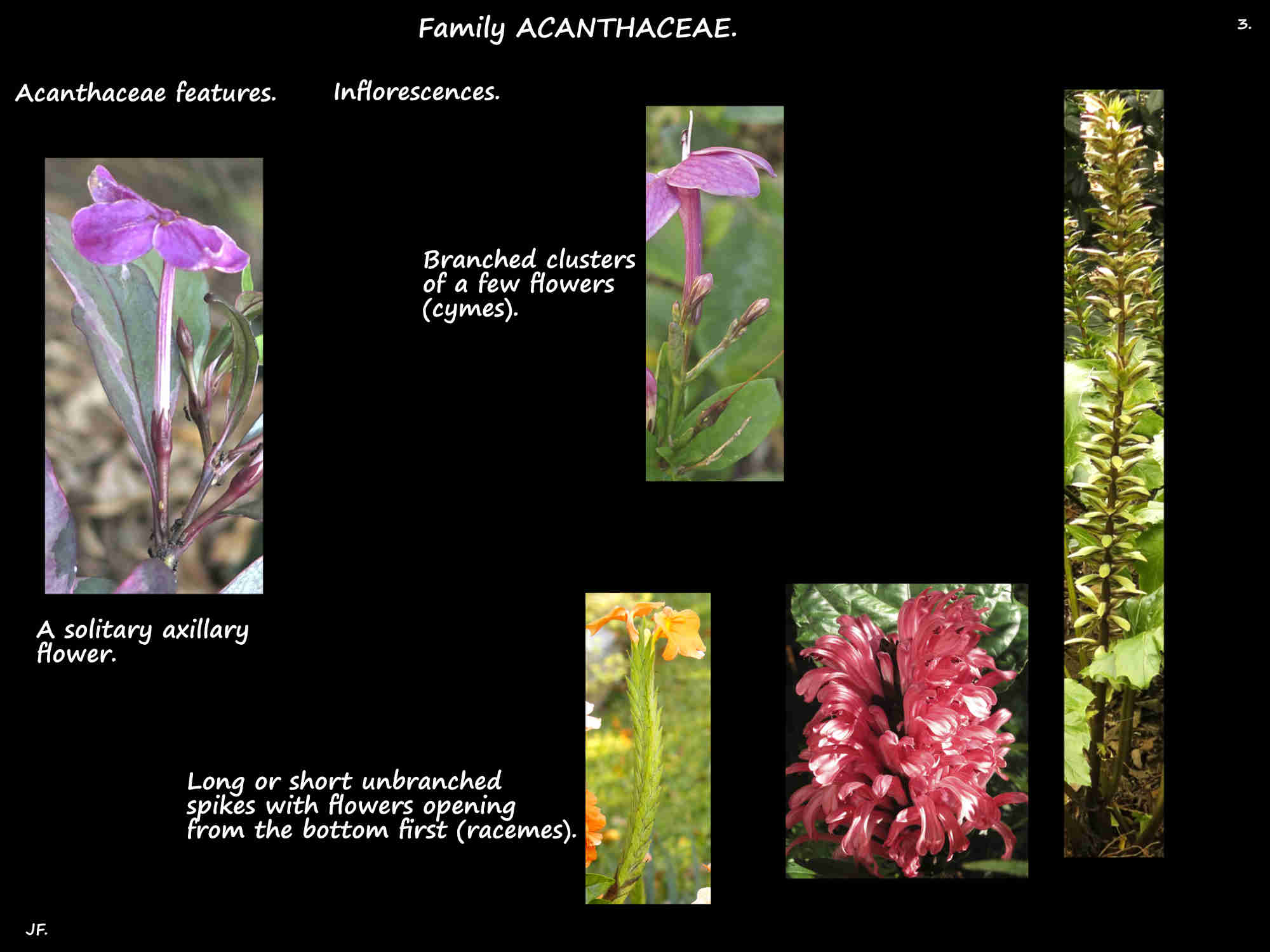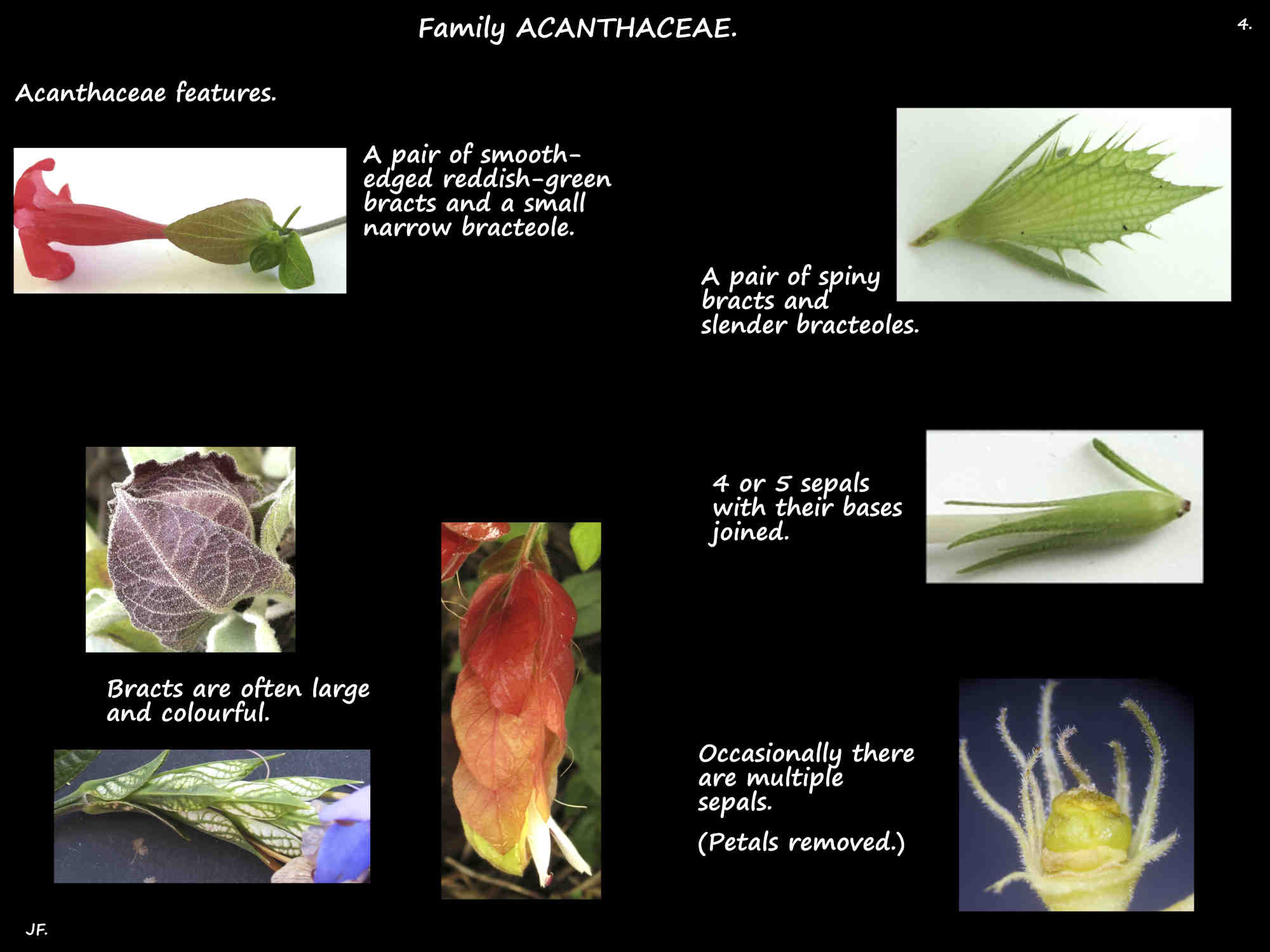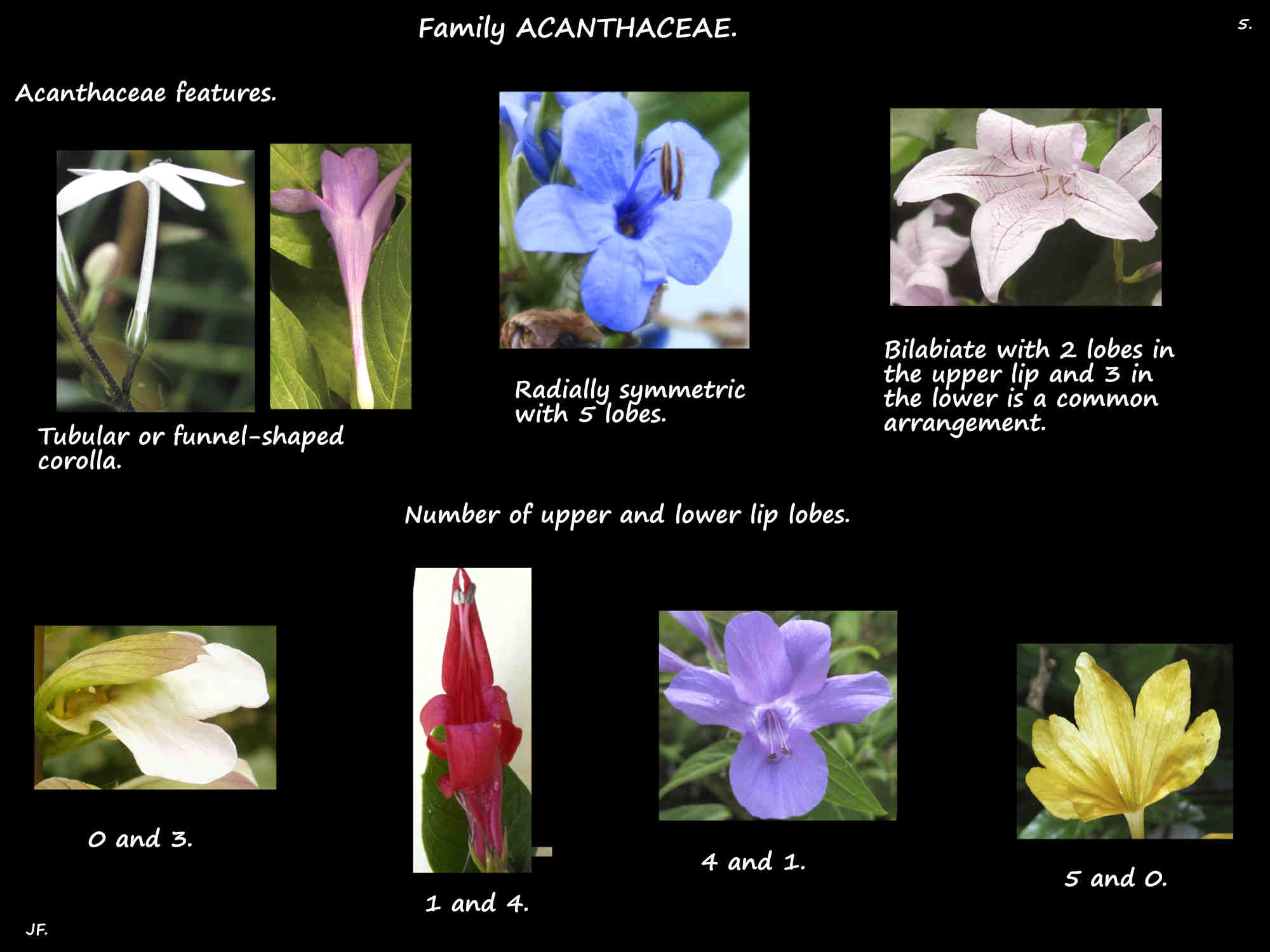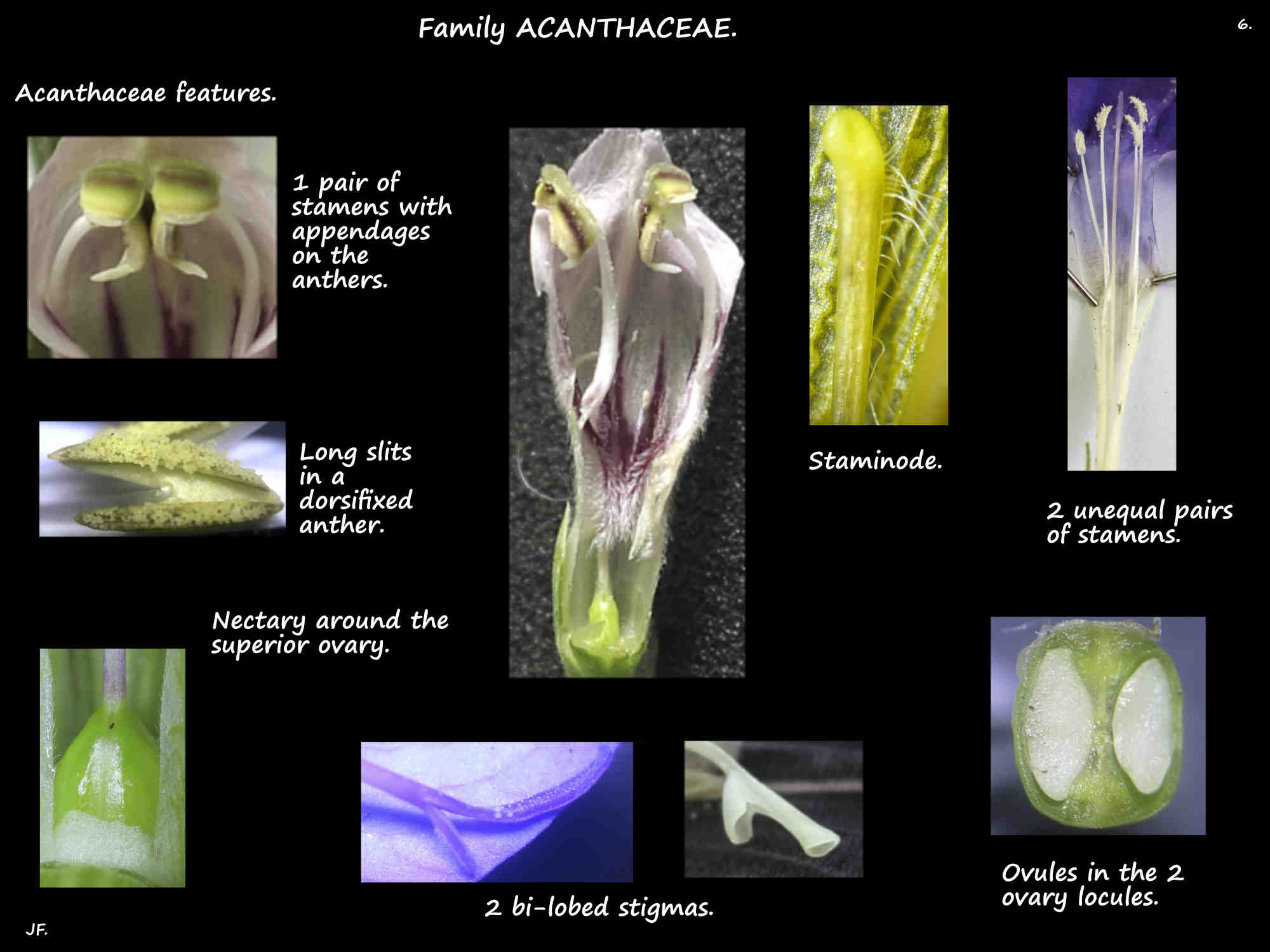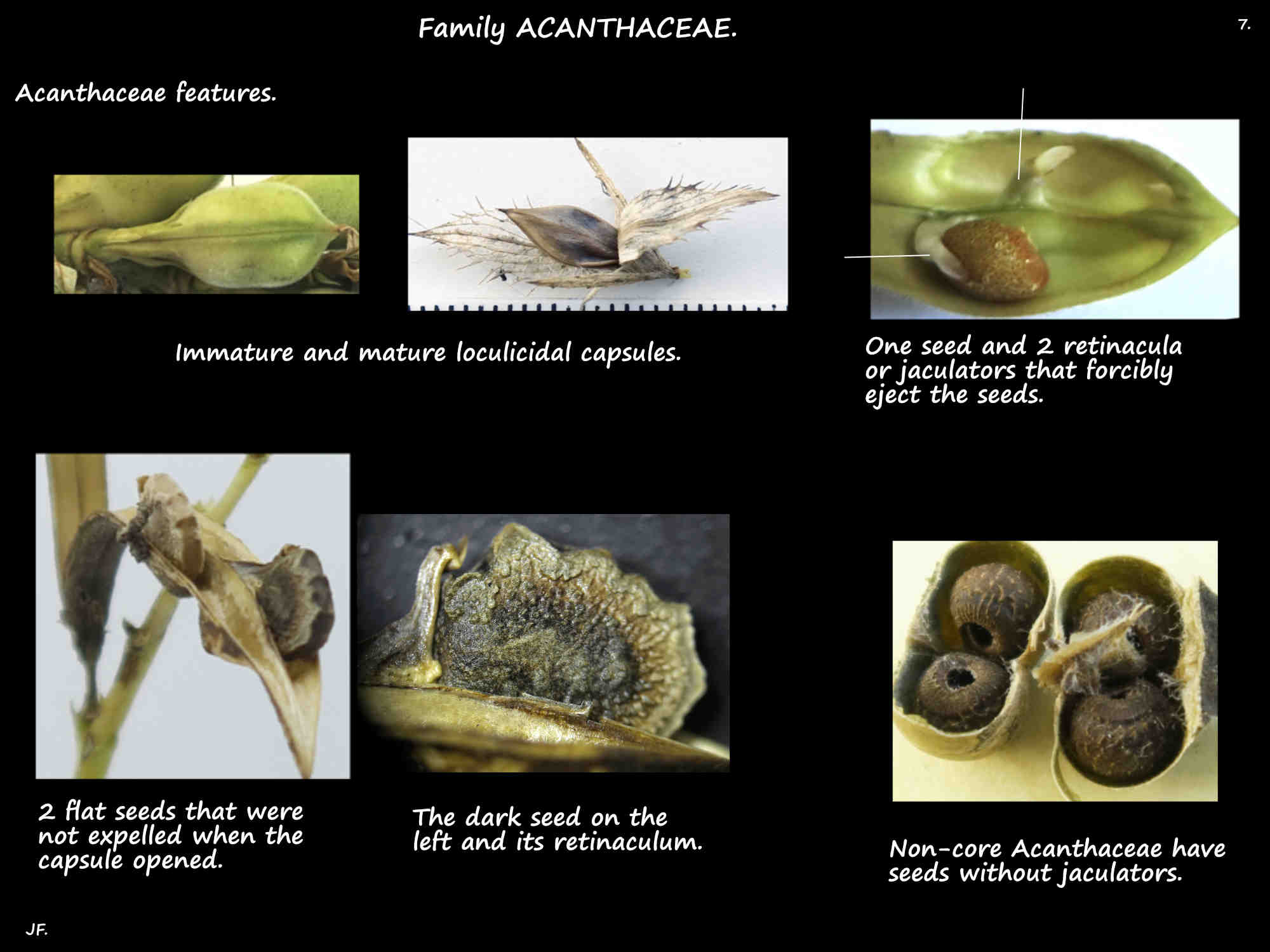Acanthaceae.
The Acanthus Family is now mostly divided into the Subfamilies Acanthioideae, Avicennioideae,
Nelsonioideae and Thunbergioideae.
The Plant List recognises 202 genera and 2894 species, Mabberley 202 and 3800 and other authors estimate
around 4000 species.
The most commonly seen classification now has 250 genera with around 2500 species.
These differences are due to the use of a strict or loose classification of the family.
Acanthaceae s.s. (sensu stricto) only has plants with seed capsules having a special mechanism for ejecting the seeds.
The Core Acanthaceae are Acantheae, Barlerieae, Ruellieae, Justicieae, Whitfieldieae and 1 or 2 others.
Acanthaceae s.l. (sensu lato) plants do not have a retinaculum to eject the seeds.
These non-core ones are Avicennia, Nelsonioideae and Thunbergioideae.
Reflecting the numerous changes in classification the Acanthaceae family has been seen as the Avicenniaceae,
Justiciaceae, Mendonciaceae, Meyeniaceae, Nelsoniaceae and Thunbergiaceae families.
Some of the better known garden plants are Asystasia, Barleria, Beloperone, Crossandra, Eranthemum,
Fittonia, Hypoestes, Graptophyllum, Hypoestes, Justicia, Megaskepasma, Odontonema, Pachystachys,
Ruellia, Sanchezia, Strobilanthes and Thunbergia. Some have become weeds.
Australia has native 28 genera with 57 species.
The Acanthaceae are mostly tropical plants characterised by their simple, opposite leaves, bilaterally symmetric
usually bilabiate flowers with bracts and fruit that open explosively due to special structures on the seeds.
Most are herbs but there are some shrubs and vines that climb by scrambling over other structures or twine in a clockwise direction.
Some are aquatic and there are a few small trees.
The grooved stems are swollen at the nodes which have a ridge across them.
The simple leaves are mostly opposite and decussate (in 4 ranks).
The tip is pointed and the edge can be smooth or have small teeth or be variously lobed.
The blade may be flat or rolled up or down and hairs are sometimes present.
Some have cystoliths inside the top layer of cells of their leaves and stems.
These are small collections of calcium carbonate on a stalk.
They may be visible with a lens as white streaks in the leaves.
Inflorescences can be a solitary axillary flower often in the axil of a bract.
Many are terminal spikes which can be cymes (branched with the terminal flowers opening first) or racemes
(long and unbranched with pedicillated flowers opening from the bottom first).
There are also some more complex arrangements.
The peduncles are over 3 cm long and there may be pedicels with leaf-like bracteoles that can be large.
The bisexual flowers are commonly bilaterally asymmetric but some are radially symmetric.
Flower parts are in 4’s or 5’s.
The bracts are often prominent and sometimes brightly coloured.
The calyx, of 4 (5 or 6) sepals may be hidden by large bracteoles.
Sepals are fused for half up to almost their full length with long or short lobes.
The corolla has a tubular base with 4 or 5 lobes often in 2 (1) lips.
There are 2 or 4 (5) stamens inserted into the corolla tube.
There can be 2 fertile stamens and 2 (1 or 3) staminodes.
The fertile stamens are arranged in pairs and the filament bases may be free or fused.
The anthers can have 1 or 2 equal to very unequal sacs that lie side by side or diverge.
The dorsifixed anthers open by longitudinal slits.
They may have an appendage.
There is usually a nectiferous disc around the base of the superior ovary.
The ovary consists of 2 fused carpels and has 2 locules with 1 to many ovules with axile placentation in each.
The single terminal style has a bilobed stigma.
The fruit are 2-chambered loculicidal capsules that open explosively or rarely a drupe.
The core Acanthaceae have a small rigid hooked stalk (a jaculator or retinaculum) on the seed that ejects the
seed some distance away from the plant.
The hook usually remains attached to the seed after it is ejected.
The seeds are usually flattened and may have many to no hairs.
J.F.

